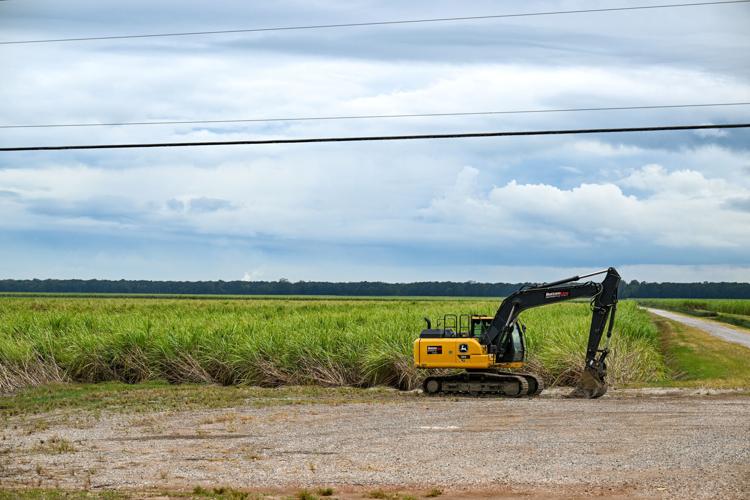Advocacy groups warning of environmental and health risks and industry lobbyists promoting job growth descended upon Donaldsonville on Thursday evening to play their respective roles in a permit hearing for a proposed ammonia facility north of the city.
Louisiana Department of Environmental Quality hearings follow a specific structure. The company presents an overview, followed by comments from residents and officials, then anyone who supports the permit and finally, anyone who opposes it.
At Thursday’s hearing for Clean Hydrogen Works, which proposes a $7.5 billion ammonia facility between Donaldsonville and the unincorporated community of Modeste, some later comments came from New Orleans advocacy groups and Baton Rouge business lobbyists. Roughly a quarter of the audience left after supporters of the permit finished speaking.
Yet among these various interest groups sat the locals, who both worried about potential environmental impacts and expressed hopes for jobs. For the small community, people with close connections sometimes took opposing views.
Mayor Leroy Sullivan, who worked for CF Industries for many years and was severely injured in an accident there, said he supported the permit because of the plant’s economic potential. But he acknowledged the divide within the community.
“There are people here that are on the opposite side of the way that I feel about industry. There’s people that I love, there’s people that I respect,” he said. “That love and respect will always be there.”
Ammonia concerns
At its peak output, the plant will produce an estimated 7.2 million tons of ammonia per year, the company says. The CF Industries facility in Donaldsonville is the world’s largest ammonia production facility, and that company wants to build another facility near the proposed Clean Hydrogen Works site.
Modeste residents such as Sherry White raised that as a concern.
“The worst-case scenario is an ammonia plume, like the school evacuation at Donaldsonville,” she said.
In late 2022, an ammonia leak at the CF Industries plant caused the Donaldsonville Primary School, which teaches around 460 children, to temporarily evacuate. Officials reported no injuries from the incident.
The company argues it will safely produce ammonia and has been working with the community to listen to concerns.
“We believe in direct, open communication with community stakeholders,” Senior Vice President of Project Development Vee Godley said in his opening remarks.
Job opportunities
Godley, industry leaders and local officials said the facility will bring jobs to Donaldsonville and surrounding areas. According to recent U.S. Census Bureau estimates, the city has a poverty rate near 50%.
Tamiko Francis Garrison, a justice of the peace in Donaldsonville with family connections in Modeste, supported the permit.
“Donaldsonville has been a community, in the words of my late father, held together by duct tape and wood,” she said.
“I’m excited to see the engagement of industry in our community, which would assist with lowering our poverty level, decreasing (the) unemployment rate, the potential to hire our children and grandchildren so they don’t have to leave the city, parish and state of Louisiana as I did in the 1990s, and it will foster employment for generations to come,” she added.
The company’s website states the project will generate roughly 350 new permanent jobs with an average annual wage of $116,375 plus benefits.
A similar scenario
This isn’t new history for the parish. Decades ago, Geismar residents had similar discussions as industries established large petrochemical plants there.
Malaika Favorite, a Geismar resident and Louisiana Environmental Action Network board member, previously told The Advocate residents felt excited by job prospects at the time.
“Everybody was excited because it meant jobs, you know, this was like a real job desert around here,” she said.
While the plants did bring jobs, she felt it didn’t significantly improve the quality of life for residents.
Amos Favorite, her father and a prominent community activist, was significantly involved in working with employees during the BASF lockout in the 1980s and campaigning to incorporate Geismar, so the area could obtain tax revenue from the industries. The movement faltered after 11 chemical companies successfully blocked it in court.




